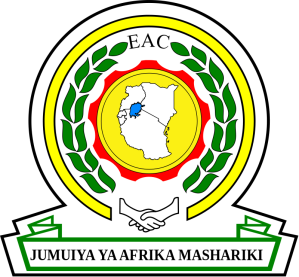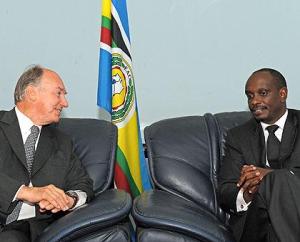 Since July 2014, EAC revenue officers work together to facilitate trade within the community. Some improvements remain made; the Single Customs Territory (SCT) does present some advantages. Since the single customs territory is operational, clearing processes are established in the country of destination while the goods are still at the port of Dar es Salaam”, explains Leah Skauki, a SCT liaison officer at the Tanzania Revenue Authority (TRA).
Since July 2014, EAC revenue officers work together to facilitate trade within the community. Some improvements remain made; the Single Customs Territory (SCT) does present some advantages. Since the single customs territory is operational, clearing processes are established in the country of destination while the goods are still at the port of Dar es Salaam”, explains Leah Skauki, a SCT liaison officer at the Tanzania Revenue Authority (TRA).
Once the declaration is over, when custom duties and taxes are paid, TRA verifies the physical goods. “The office grants a notification testifying that the goods fulfil all requirements in order to get the exit note.” Within the new system, the number of weighbridges and non-tariff barriers are reduced because “truck drivers only have to show the documents which certify that the goods have undergone verification.”
Massoundi Mohamed Ben Ali, Administrative Director in Charge of Human Resources and Import – Export at the Bakhresa Grain Milling Burundi, is pleased with the new development. “Before the system was implemented, Bakhresa used to import 3800 Tonnes of wheat (40 trucks) and we were obliged to declare each truck with a different clearing agent. We now fill in one statement with one clearing agent. The procedures are done quickly with a small of amount of money”, he points out.
Clearing agents testify that the number of statement on the borders is reduced. “Before, transporters had to fill in a transit declaration (T1) on each border”, one of the clearing agents in the Dares Salaam port relates.
Aimable Nsabimana, a focal point of SCT in Dar es Salaam for the Burundi Revenue Authority, indicates that the computerised system they use is different in each country.”It is not easy to exchange data. We are forced to print documents for verification. And when the goods arrive in Tanzania, they are in the hands of the TRA which has its own software”, he notes.
Inter-connectivity of software would facilitate verification and avoid fraud. This opinion is shared by many clearing agents: “If we were interconnected, the Tanzanians would be able to easily access Burundian data and vice versa”, one of them says.
Léonce Niyonzima, programme and monitoring officer at OBR and the national coordinator of SCT, agrees that the lack of interconnectivity causes delays in the transmission of documents.
He says that all EAC countries should have been interconnected by June 2014, but due to technical problems Tanzania and Burundi still lag behind. “There is a technical committee responsible for monitoring and evaluation which will draw up the balance sheet of the challenges before ending the pilot stage at the end of this year.”
The Single Customs Territory is funded by Trademark East Africa with an amount of USD 450 thousand for the redeployment of staff, travel expenses, inspection and supervision, information technology, office equipment and assistance. Source: http://www.iwacu-burundi.org





You must be logged in to post a comment.